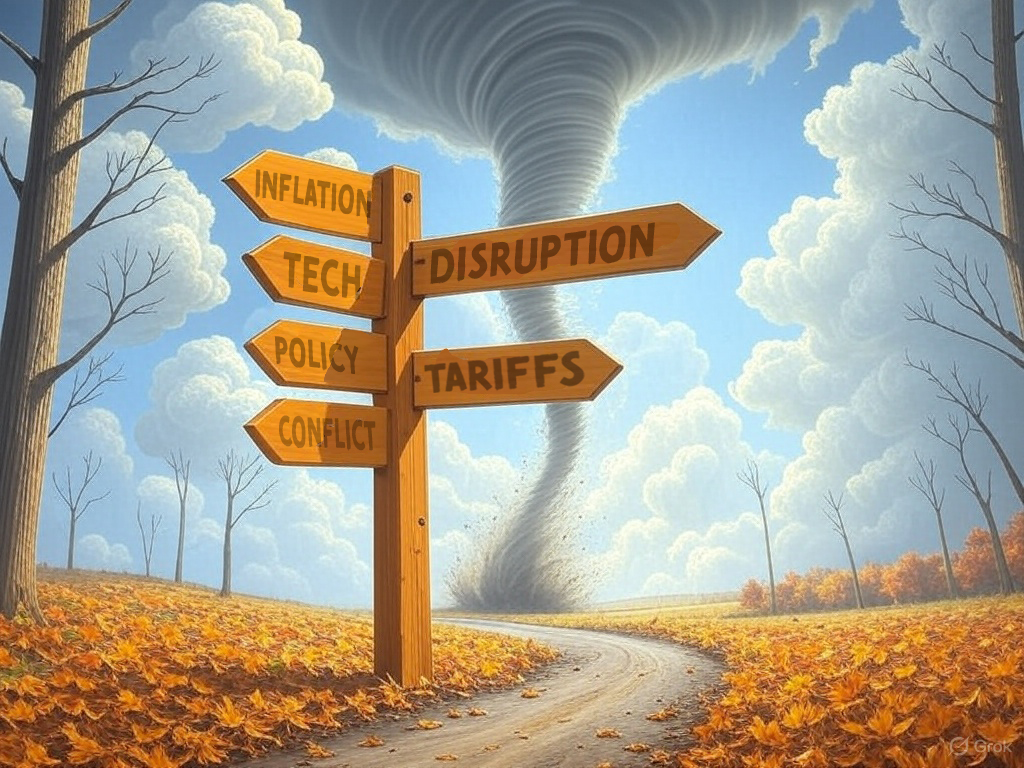Volatility is often seen as a challenge, but for agile businesses, it’s a goldmine of opportunity. As the U.S. and global markets navigate seismic shifts—tariffs disrupting supply chains, industries realigning, and inflation squeezing consumer budgets—volatility is opening the minds of potential customers to new sources and suppliers. The key? Spotting the signals of change and acting decisively to seize the moment.
I call this Upstream Signal Marketing. This strategic marketing approach shifts your focus beyond just the right customer to the right customer at the right time. You seek signals they’re in the market now, getting as far upstream in their buying process as possible—sometimes even before they realize they’re shopping. That’s the heart of Upstream Signal Marketing: finding prospects at critical moments, triggered by change or volatility you can spot and act on. By engaging early, you connect before they broaden their search and rivals crowd in, closing sales while the window is yours alone.

Here are eight examples to help inspire your understanding:
1. Decision Maker Volatility:
In a B2B environment, turnover and newly appointed decision-makers create windows of opportunity. For example, a newly hired purchasing officer may be open to supplier changes to demonstrate value. Small businesses can leverage platforms like LinkedIn to track new hires in target companies, identifying ideal moments for outreach.
2. Mergers and Acquisitions:
Mergers and acquisitions typically generate volatility, prompting companies to seek new suppliers and vendors. Small businesses can capitalize on this by targeting potential acquisition candidates early in the process.
3. Dissatisfied Customers:
When a competitor’s customer is dissatisfied, there is volatility - they may be in the market. Identifiable indicators of this volatility are important. When a small business identifies indicators, it can target those who put off signals (indicators) of dissatisfaction. For example, a small business monitors online reviews and social media complaints about competitors, then targets dissatisfied customers with tailored ads offering superior service.
4. Agility in Product Offerings:
In volatile markets, customer needs and preferences can shift quickly. A small business that stays attuned to these changes and adapts its products or services can capture demand early. For example, a local clothing boutique might capitalize on a sudden fashion trend by quickly sourcing and stocking popular items, filling a gap before larger retailers can react.
5. Marketing During Industry Shifts:
When major players in an industry experience disruptions—such as supply chain issues or rebranding—a small business can market itself as a stable and reliable alternative. For example, if a big-box hardware store faces inventory shortages, a local hardware store might advertise its in-stock supplies and emphasize its commitment to serving the community consistently.
6. Pain Points in Economic Downturns:
Economic volatility often prompts customers to reevaluate spending. A small business can tailor its marketing to address cost-conscious concerns or promote value-driven options. For example, a local restaurant might introduce affordable meal deals or loyalty programs, appealing to customers looking for quality at a better value.
7. Capitalizing on Seasonal or Cyclical Demand:
Many industries experience natural ebbs and flows, such as tax season for accountants or peak wedding season for florists. By ramping up marketing efforts just before these peak periods, a small business can reach customers precisely when they’re likely to be in need. A tax preparation service, for example, might launch an “early bird” campaign at the start of tax season, attracting clients who want to get ahead.
8. Leveraging Trends and News:
Social media is often volatile, with trends and viral content rapidly influencing what’s on people’s minds. For instance, a local eco-friendly cleaning product company might notice a viral social media challenge around sustainable living—like a “#ZeroWasteWeek” campaign gaining traction. They could quickly launch a series of short, engaging videos showcasing their products in zero-waste routines, using the trending hashtag to join the conversation. By aligning with the challenge, they attract environmentally conscious consumers searching for sustainable options, capitalizing on the buzz while it’s hot.
Volatility isn’t going away—not with tariffs, inflation, and global change in play. For businesses willing to embrace it, every shift is a chance to establish new relationships, secure new contracts, win sales, and outmaneuver the competition. The question isn’t whether volatility will strike—it’s whether you will capitalize on it by spotting signals of change and taking action to turn it into your next big win.
What signals of change have you spotted lately?